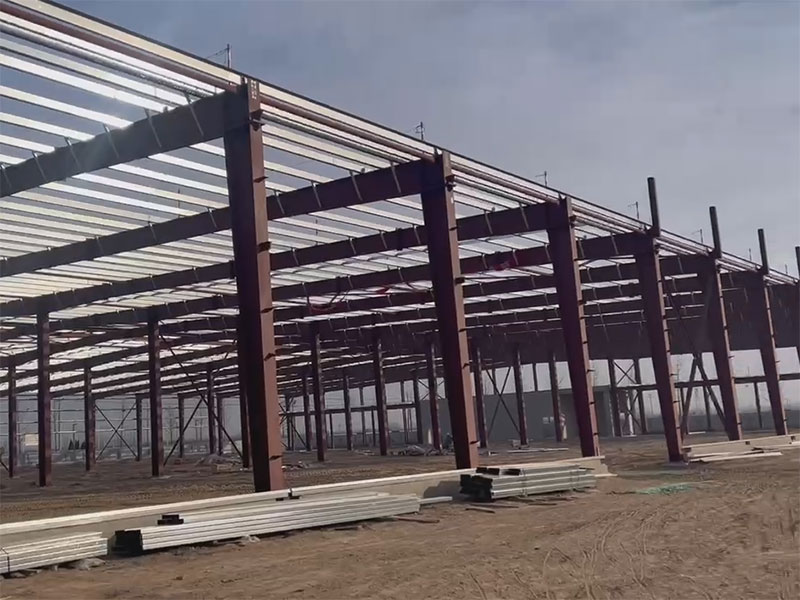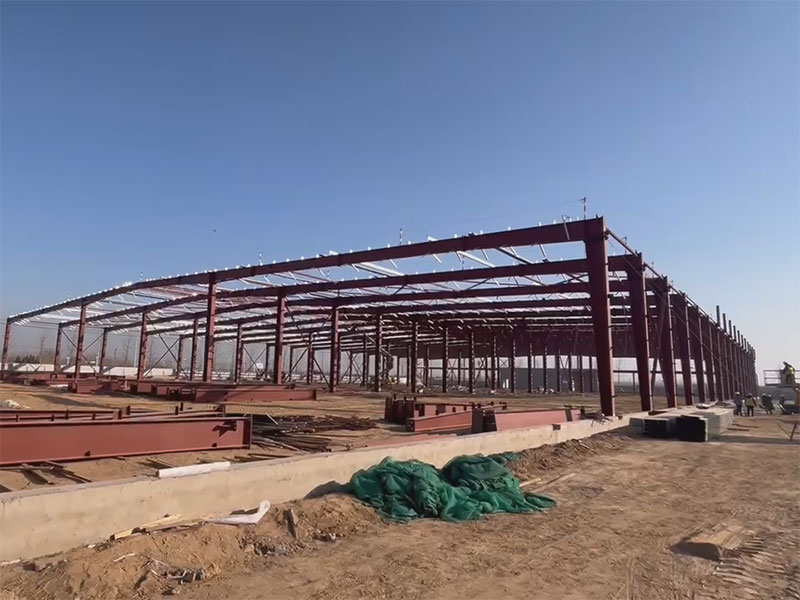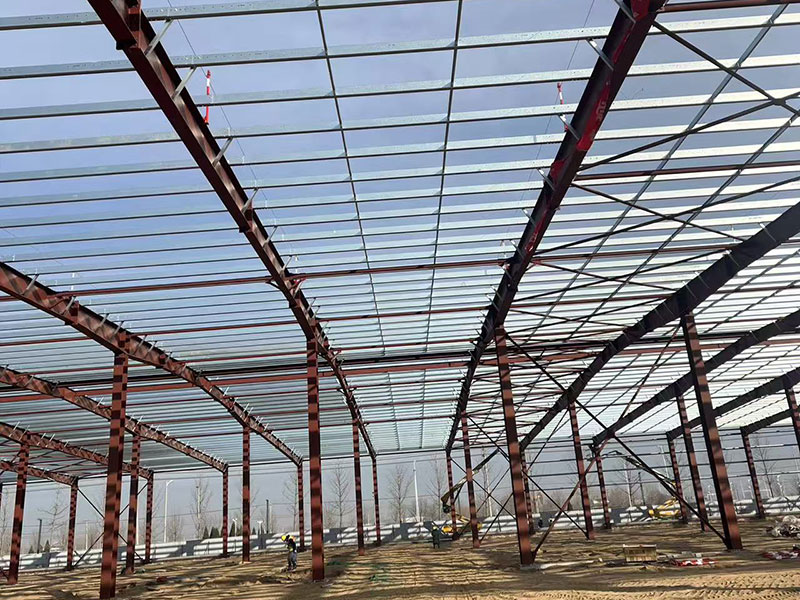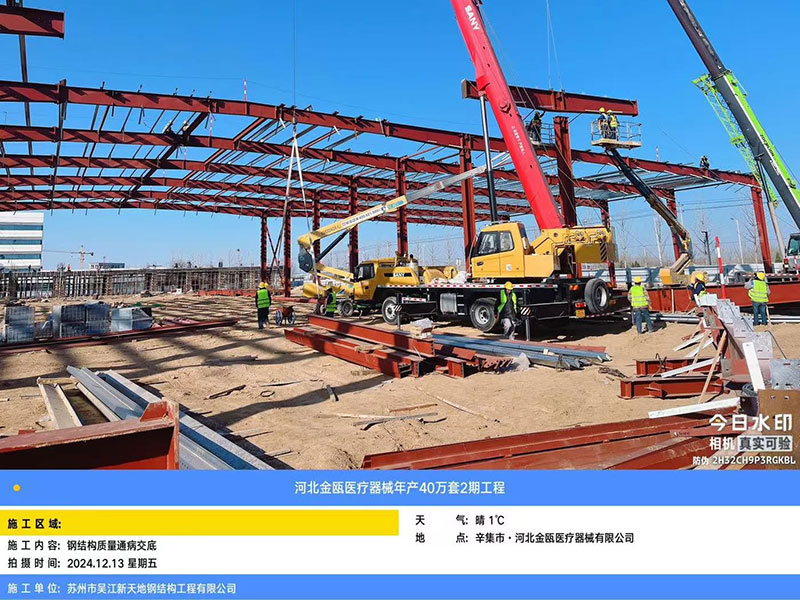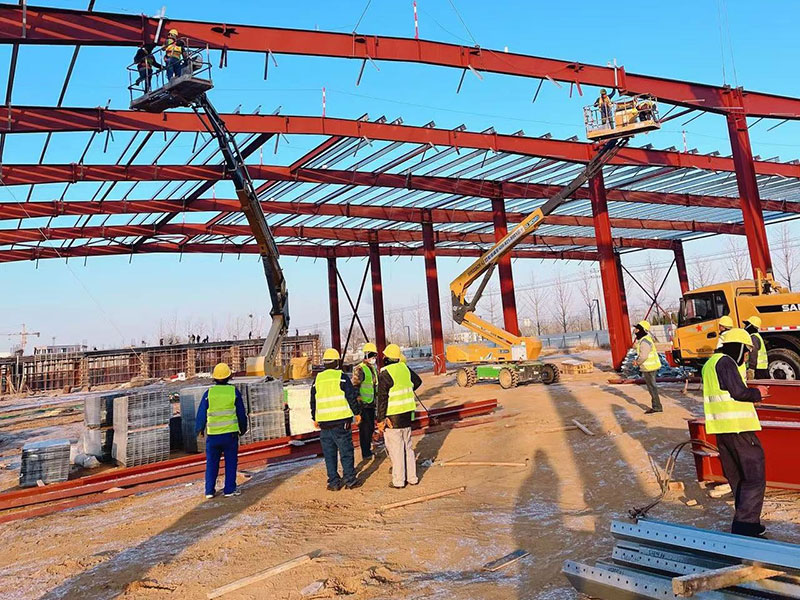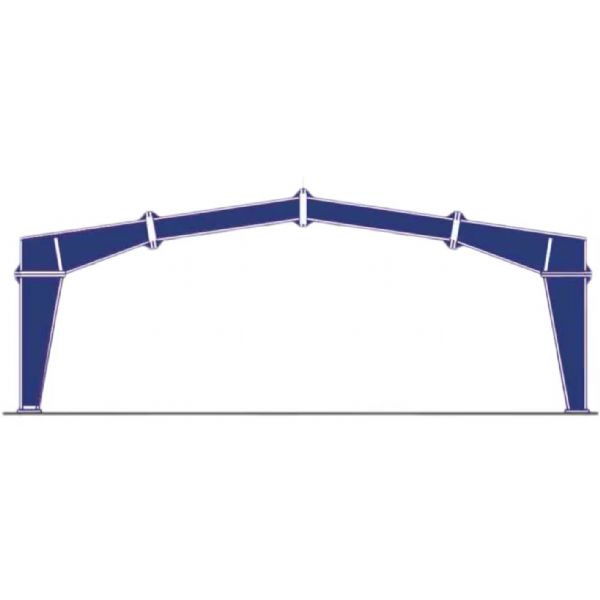Steel Structure Factory Details
The Hebei Jin’ou Steel Structure Factory is a landmark example of modern industrial architecture that integrates robust steel engineering, intelligent design, and advanced construction methods. Covering a total area of 13,000 square meters, the facility was developed within the Hebei Jin’ou Medical Industry Park to meet the region’s growing demand for high-standard, efficient, and scalable manufacturing infrastructure.
This state-of-the-art project utilizes a standardized portal rigid frame system, a proven solution for industrial steel construction that ensures exceptional structural strength, cost-effectiveness, and operational efficiency. The factory is designed to house precision manufacturing lines, logistics operations, and administrative areas, representing the next generation of sustainable industrial development in Hebei.
Project Overview
The Hebei Jin’ou Steel Structure Factory Project was conceived as a multifunctional industrial facility capable of supporting the complex needs of the medical equipment and pharmaceutical manufacturing sector. Its expansive footprint and innovative steel framework enable seamless integration of production processes, material flow, and quality control systems—ensuring a safe, durable, and future-ready industrial environment.
Location
Strategically located in Hebei Province, the factory sits at the heart of one of China’s fastest-growing medical industry zones. With convenient access to major highways, railways, and ports, the factory benefits from highly efficient logistics and supply chain connectivity. This advantageous location enhances regional distribution capabilities and reinforces Hebei’s role as a manufacturing hub for medical technologies.
Architectural and Structural Design
The architectural design of the Hebei Jin’ou Steel Structure Factory reflects a perfect balance between practicality, performance, and sustainability. Its expansive interior is made possible through the standardized portal rigid frame structure, which provides maximum open floor space for machinery, production lines, and internal logistics.
Standardized Portal Rigid Frame Structure
The backbone of the project is the standardized portal rigid frame system, a hallmark of modern industrial steel construction.
Key advantages include:
- High Load-Bearing Efficiency: The rigid frame evenly distributes heavy loads, ensuring stability and long-term reliability for large production equipment.
- Open Interior Layout: Minimal use of interior columns maximizes workspace flexibility, allowing dynamic manufacturing and assembly arrangements.
- Fast Construction: Prefabricated components streamline on-site assembly, significantly shortening construction timelines.
- Durability and Safety: The frame resists seismic and wind loads while providing exceptional fire safety and structural longevity.
Factory Area and Functional Layout
Spanning 13,000㎡, the facility provides a well-organized structure accommodating multiple functional zones — including production workshops, quality control labs, raw material storage, R&D spaces, and administrative offices. This optimized layout ensures a smooth flow of materials and personnel, maximizing operational efficiency across the factory.
Roof and Wall Systems
The factory features a high-performance steel roof and wall system engineered for durability and energy efficiency. The roof design supports insulation, natural daylight panels, and rainwater drainage systems, ensuring optimal working conditions. Wall panels are thermally insulated and corrosion-resistant, providing long-term protection against environmental elements.
Construction Process
Building a large-scale steel structure factory requires precision, coordination, and adherence to strict engineering standards. The construction of the Hebei Jin’ou facility followed a structured process to ensure both speed and quality.
Site Preparation and Foundation
Detailed soil analysis and geotechnical surveys preceded the installation of a reinforced concrete foundation system. The foundation was designed to handle heavy machinery loads, vibration damping, and long-term structural stability—ensuring safe operation across all production zones.
Steel Fabrication and Prefabrication
All steel components were fabricated off-site using advanced CNC cutting, drilling, and welding technology. The prefabrication process ensured precision and quality control, allowing seamless on-site assembly. The standardized portal frame system minimized waste and optimized material usage.
Assembly and Installation
Once delivered to the site, the prefabricated steel members were assembled using cranes and specialized tools. The structural skeleton was erected systematically, followed by the installation of roofing, cladding, insulation, and internal systems. Each stage adhered to strict alignment and connection standards to guarantee long-term reliability.
Quality Control and Safety Standards
Comprehensive quality checks were implemented throughout fabrication and construction. Welding seams, bolts, and joints were inspected per GB and EN industrial codes. On-site safety procedures ensured worker protection and compliance with national construction regulations.
Operational Advantages
Optimized Production Space
The open-span steel structure allows for versatile factory layouts. Production lines, assembly zones, and logistics areas can be easily adjusted to meet different manufacturing requirements—providing flexibility for future upgrades.
Enhanced Workflow and Efficiency
Wide interior spans eliminate barriers, creating uninterrupted process flow from raw material intake to finished product dispatch. This design reduces handling time and boosts production efficiency.
Safety and Durability
The factory’s rigid frame structure ensures stability under heavy operational loads, wind pressure, and seismic activity. Anti-corrosion coatings and fire-resistant materials extend the facility’s lifespan and lower long-term maintenance costs.
Expandable and Adaptable Design
Thanks to its modular steel structure, the facility can be expanded with additional bays or annexes without major disruption. This flexibility allows for future scaling of production capacity as the medical industry grows.
Significance in Industrial Development
Engineering Achievement
The Hebei Jin’ou Steel Structure Factory showcases how standardized steel construction methods can deliver both strength and cost-effectiveness. Through meticulous engineering and prefabrication, the project achieved a balance between rapid delivery and uncompromising quality.
Industrial Impact
The factory significantly enhances Hebei’s medical manufacturing capabilities, supporting pharmaceutical production, medical device assembly, and logistics operations. Its completion strengthens regional supply chains and positions Hebei as a center of innovation for medical industry infrastructure.
Sustainability and Efficiency
Environmental responsibility is a cornerstone of the project. The steel structure factory integrates multiple sustainable features:
- Material Optimization: The portal frame system minimizes steel waste and maximizes strength-to-weight efficiency.
- Energy Efficiency: Skylights and natural ventilation reduce dependence on artificial lighting and HVAC systems.
- Recyclability: All structural steel is recyclable, supporting a circular economy and minimizing carbon emissions.
- Long-Term Durability: High-strength steel and protective coatings extend the factory’s service life, reducing the environmental impact of maintenance or reconstruction.
Conclusion
The Hebei Jin’ou Steel Structure Factory, located within the Jin’ou Medical Industry Park, stands as a benchmark of modern industrial architecture. Encompassing 13,000㎡ of precision-engineered steel structure, it embodies efficiency, durability, and sustainability in one cohesive design.
With its advanced portal rigid frame system, superior construction quality, and operational flexibility, the project demonstrates how steel structure factories can redefine industrial productivity. The factory’s completion not only supports Hebei’s growing medical sector but also symbolizes the evolution of China’s industrial engineering toward smarter, greener, and more resilient construction practices.
The Hebei Jin’ou project is more than a manufacturing facility — it is a model of industrial innovation, representing the perfect fusion of structural strength, architectural intelligence, and sustainable development.

